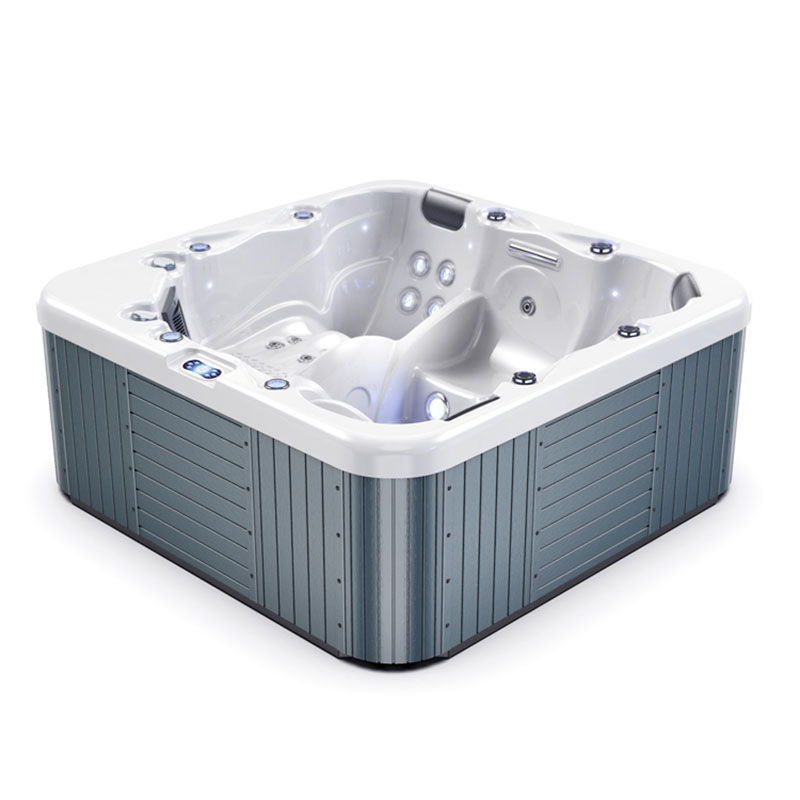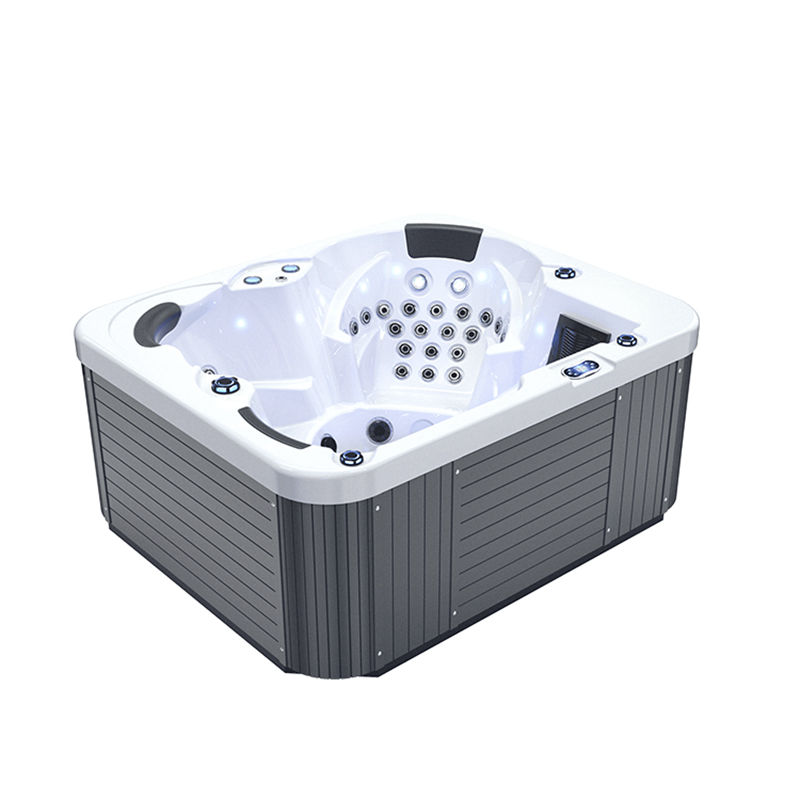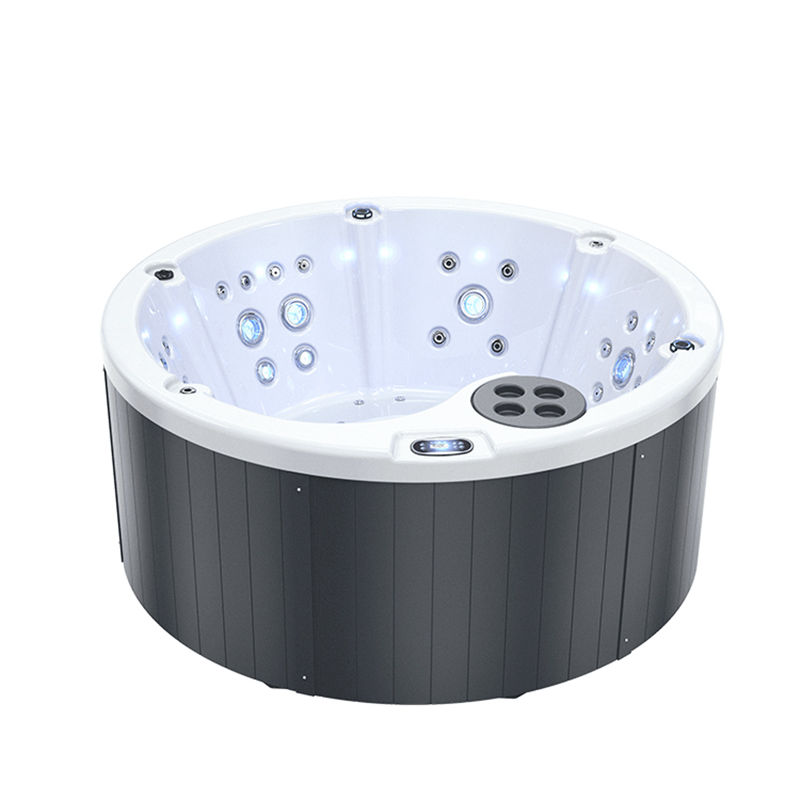The design of an exterior hot tub requires not only a comfortable massage experience in terms of functionality, but also effective energy management to ensure that heat is not lost excessively, thereby maintaining water temperature and saving energy. In this process, the choice of insulation material is particularly important. The quality and type of insulation material directly affects the energy efficiency, user experience and long-term operating costs of the exterior hot tub.
This article will explore in detail the common types of insulation materials used in exterior hot tubs, analyze their respective advantages and disadvantages, and explain which material is best for exterior hot tubs.
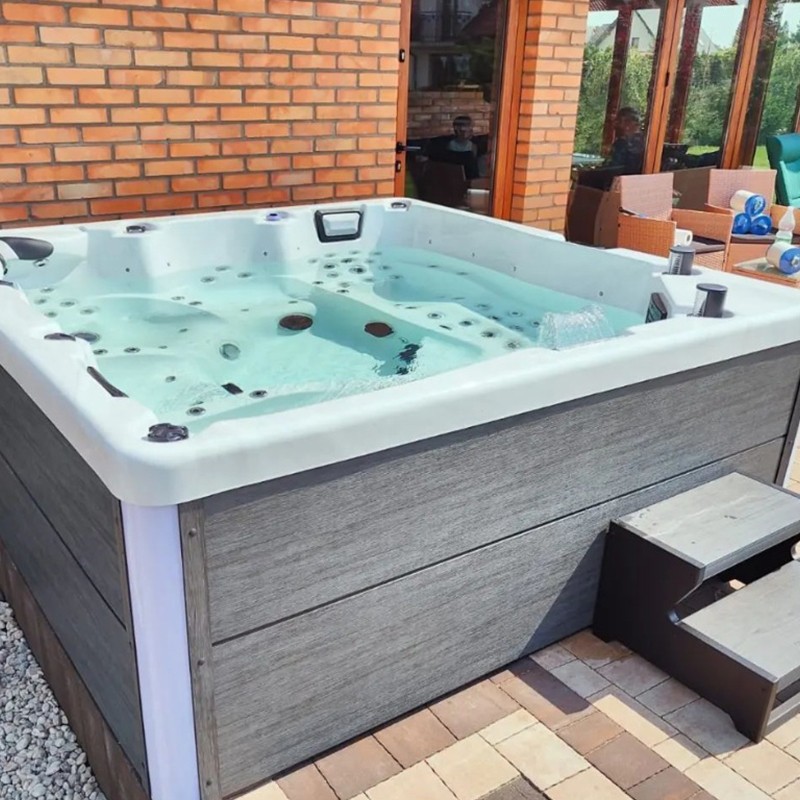
Why do exterior hot tubs need insulation?
In outdoor environments, the temperature of hot tubs is affected by the surrounding air temperature. Especially in cold weather, it takes a lot of energy to keep the water temperature of exterior hot tubs. Without effective insulation measures, heat will dissipate quickly, causing the exterior hot tub heating system to need to work frequently, increasing power consumption and shortening the service life of the exterior hot tub.
The main function of insulation materials is to reduce the conduction and loss of heat from the exterior hot tub to the external environment, maintain the internal water temperature stable, and reduce the workload of the exterior hot tub. Therefore, choosing the right insulation material is crucial to improving energy efficiency and user experience.
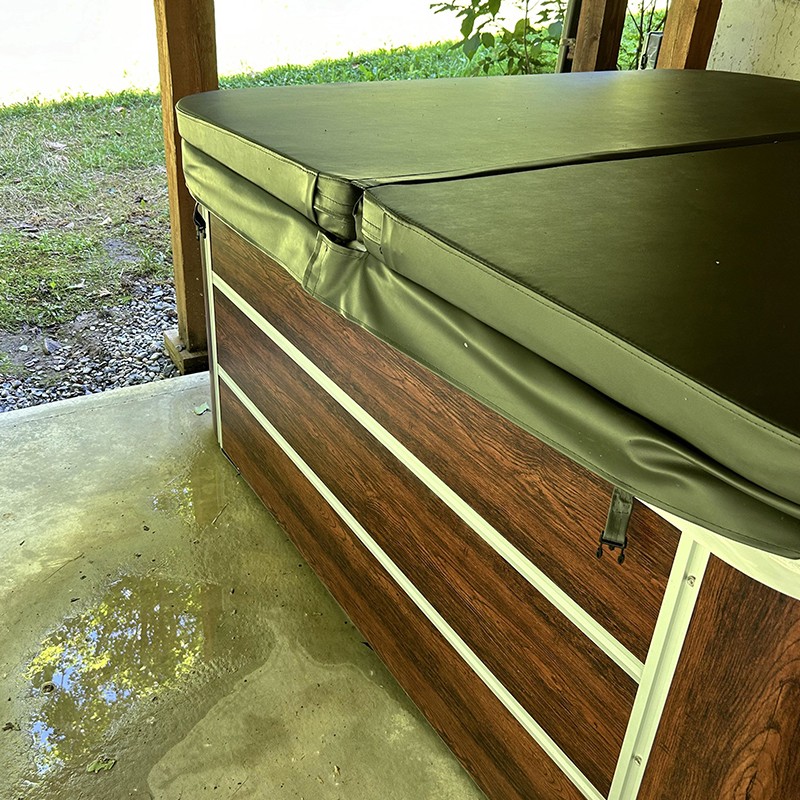
What are the types of exterior hot tub insulation materials?
There is a wide range of insulation materials to choose from, but in the application of exterior hot tubs, there are several materials that stand out. They have good results in preventing heat loss, withstanding bad weather and long-term use.
Polyurethane Foam
Polyurethane foam is one of the most common hot tub insulation materials on the market. It is favored for its excellent insulation performance and wide application.
Advantages of polyurethane foam:
● High efficiency insulation performance: The closed-cell structure of polyurethane foam effectively reduces the loss of heat from the exterior hot tub through convection and heat conduction, so it can significantly reduce energy consumption.
● Lightweight and easy to install: Polyurethane foam is lightweight and can be sprayed or cast into the interior of the exterior hot tub, fitting the shape of the hot tub to make its insulation effect uniform.
● Strong water resistance: The material is not easy to absorb water, which means that it can maintain a stable insulation effect of the exterior hot tub even in a humid environment and will not fail over time.
Disadvantages of polyurethane foam:
● High cost: Although polyurethane foam has excellent performance, its price is relatively high, especially when it completely fills the entire hot tub.
● Environmental issues: Polyurethane foam is made of chemical ingredients, and the production process may produce byproducts that are harmful to the environment.
Foam Boards
Foam boards are a more traditional insulation material, commonly used for building insulation and basic insulation of exterior hot tubs.
Advantages of foam boards:
● Relatively cheap: Foam boards have a low production cost and are suitable for hot tub users with a limited budget.
● Easy to cut and install: Foam boards can be cut according to the shape of the exterior hot tub, and the installation is relatively simple, suitable for DIY users.
Disadvantages of foam boards:
● The insulation effect is not as good as polyurethane foam: Although foam boards can provide a certain degree of insulation, they cannot compare with polyurethane foam due to their loose structure.
● Limited service life: Foam boards are susceptible to compression and environmental factors, and their insulation performance may decrease over time.
Reflective Insulation Foil
Reflective insulation foil is a new type of insulation material that uses its surface to reflect heat radiation to reduce heat loss.
Advantages of reflective insulation foil:
● Reflective heat radiation: Reflective foil can effectively reflect heat and prevent heat from radiating from the surface of the hot tub, especially under high temperatures or strong sunlight.
● Thin and light: This material is very light and does not increase the overall weight of the exterior hot tub. It is also flexible to install and can be attached to the outer wall or lid of the hot tub.
Disadvantages of reflective insulation foil:
● Limited insulation effect: The main function of reflective foil is to reflect heat radiation. It does not have much effect on heat lost through heat conduction and convection, so it is usually used in conjunction with other insulation materials.
● Fragile: Because the film layer is thin, it is easy to be scratched or torn, affecting its insulation effect.
Fiberglass
Fiberglass is a more traditional insulation material, commonly used in building and industrial insulation. It can also be used in the insulation system of exterior hot tubs.
Advantages of fiberglass:
● Moderate price: Fiberglass is a cost-effective insulation material suitable for most home users.
● Strong flame retardancy: Fiberglass has natural flame retardant properties, which can improve the safety of exterior hot tubs to a certain extent.
Disadvantages of fiberglass:
● Strong water absorption: Fiberglass easily absorbs water, and long-term exposure to humid environments will reduce its insulation effect and cause material aging.
● Complex installation: Compared with foam materials, the installation process of fiberglass is more complicated and requires professional installation technology.
Bubble Wrap Insulation
Bubble Wrap Insulation is a cheap and lightweight insulation material that is commonly found in the insulation layer of exterior hot tub covers and can provide basic insulation protection.
Advantages of Bubble Wrap Insulation:
● Low price: Bubble wrap has a very low manufacturing cost and is an economical insulation option.
● Lightweight and easy to operate: The material is extremely light and easy to cut, install and replace, making it particularly suitable for temporary or supplementary insulation needs of exterior hot tubs.
Disadvantages of Bubble Film:
● Limited insulation effect: Bubble film has limited insulation effect and is suitable for preventing heat loss in exterior hot tubs in a short period of time, but cannot provide long-term stable insulation performance.
● Poor durability: Bubble film is easy to break and age, especially in outdoor environments, and is easily blown away by wind or affected by the sun's ultraviolet rays.
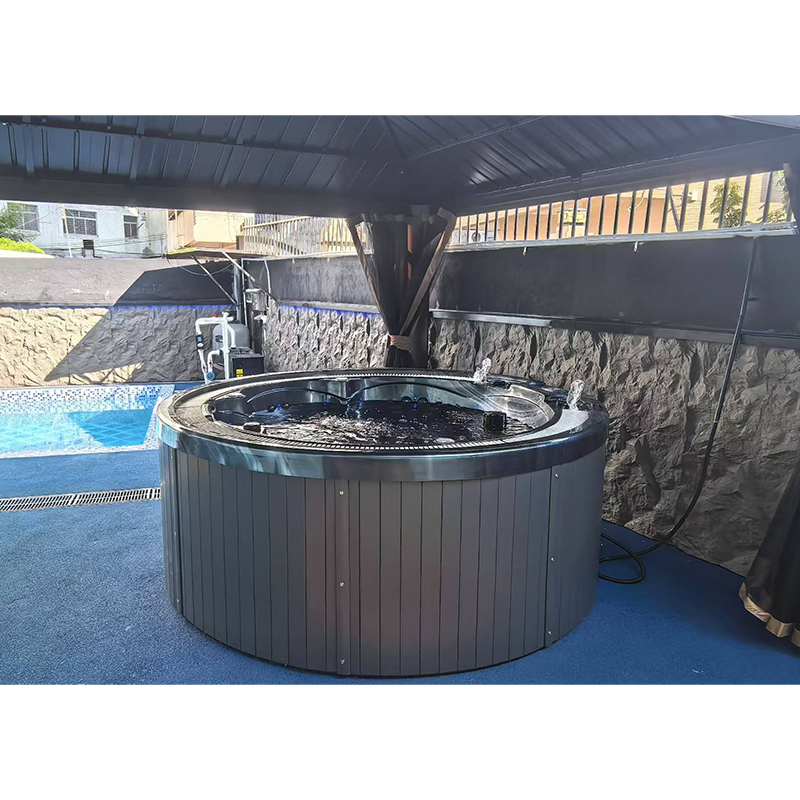
How to choose the best insulation material?
After understanding several common insulation materials, we need to discuss which material is best for exterior hot tubs. Due to the special environmental requirements of exterior hot tubs, multiple factors such as insulation effect, cost, installation convenience and durability need to be considered comprehensively.
Consider climate conditions
When choosing insulation materials, users first need to consider the climate conditions of the area where they are located. For users living in cold climates, it is particularly important to choose efficient and durable insulation materials. Polyurethane foam and fiberglass perform well in extreme climates and can maintain good insulation in low temperature environments. In warm climates, bubble film or reflective insulation film can provide sufficient insulation protection for exterior hot tubs.
Cost-effectiveness and longevity
In the long run, despite the higher initial cost of polyurethane foam, its excellent insulation performance and long service life make it the most cost-effective choice. In contrast, foam board and bubble insulation film are less expensive, but their insulation effect and durability are limited, making them suitable for short-term use or tight budget hot tub users.
Installation and maintenance convenience
For users who want to install hot tub insulation materials themselves, foam board and reflective insulation film are more attractive due to their easy installation characteristics. Fiberglass installation is more complicated and requires professional handling.
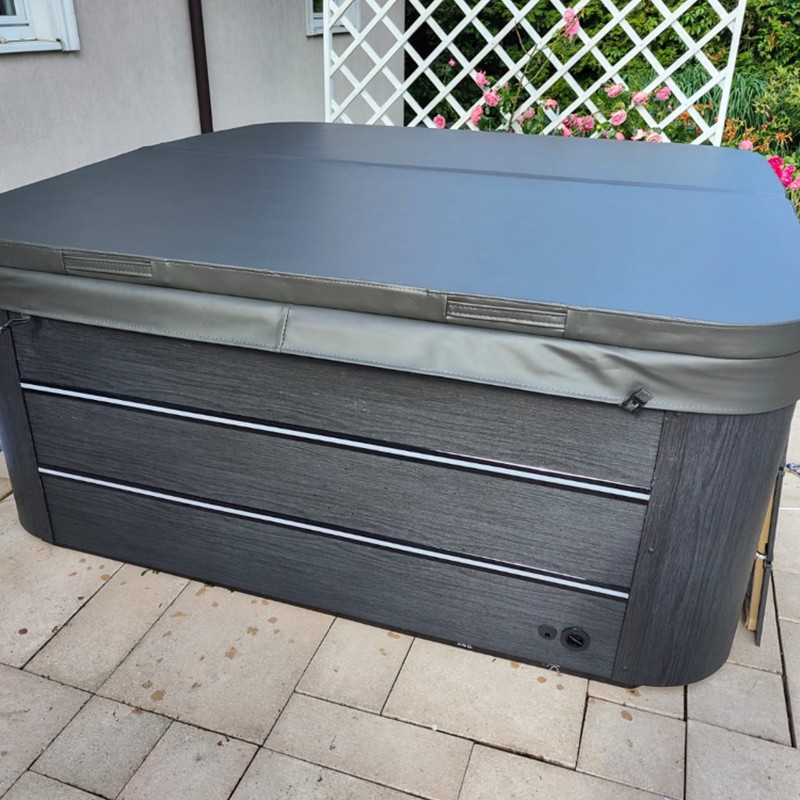
How to ensure maximum insulation effect?
Regardless of the hot tub insulation material you choose, you can improve the insulation effect of the exterior hot tub by taking some additional measures:
1. Insulation of hot tub cover: The hot tub cover is one of the main ways that heat can escape. Choosing a cover with good insulation performance or adding a layer of bubble insulation film to the cover can significantly reduce heat loss.
2. Regular maintenance: Regularly inspect and clean the hot tub insulation to ensure that it is working in optimal condition. Especially for materials that easily absorb water, such as fiberglass, it is very important to ensure that they are dry.
3. Use wind barriers: In outdoor environments, wind will accelerate the loss of heat. By setting up wind barriers or fences around the exterior hot tub, the impact of wind on heat can be effectively reduced.


